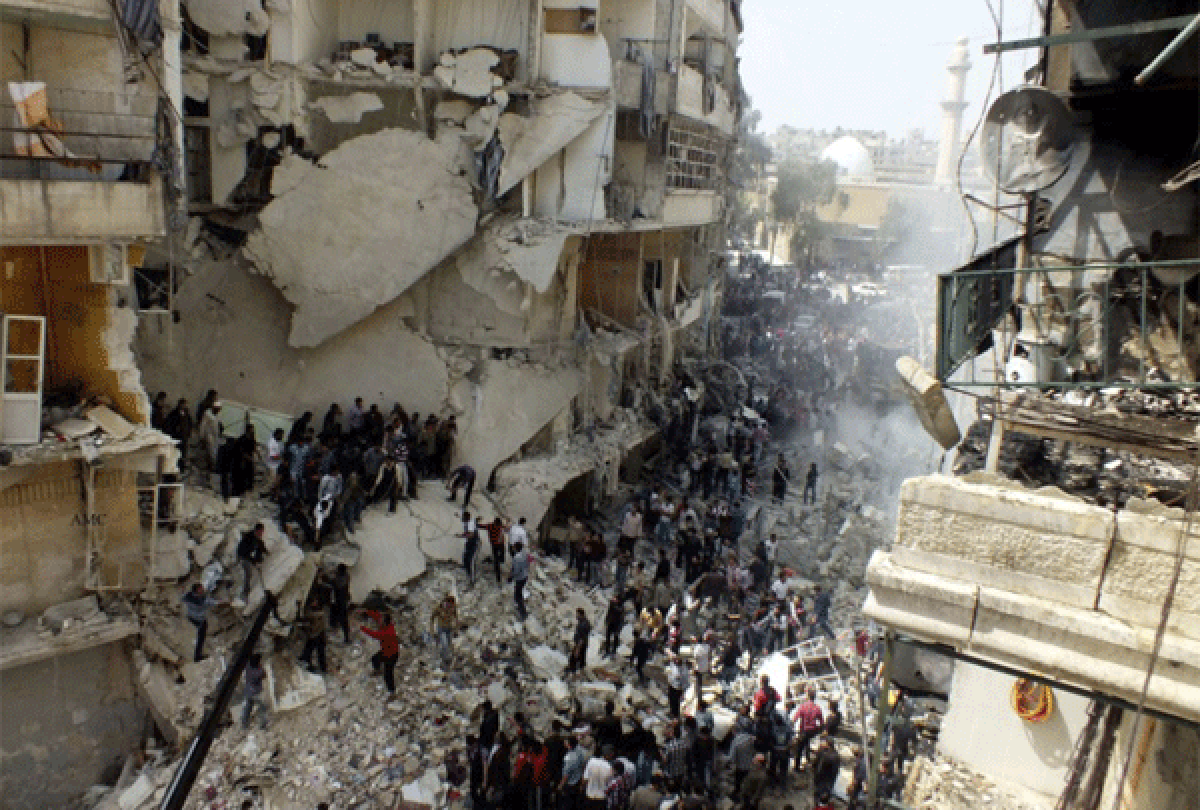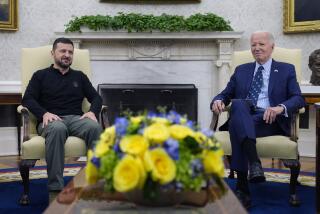McManus: Inching closer to entanglement in Syria

The White House finally made it official last week: Yes, the civil war in Syria is a slippery slope, and yes, weâre on it.
Nobody in the Obama administration actually used those words, of course. But if you paid attention to what officials said, it was clear that President Obama has reluctantly decided to take another tentative step into the ugly Syrian war, mostly because all the alternatives look worse.
âWe have continued to ratchet up,â White House spokesman Jay Carney told reporters Thursday, confirming reports of a coming increase in U.S. aid to the rebels fighting the repressive regime of Bashar Assad.
What that means is that Obama has decided to approve new ânonlethalâ supplies for rebel groups favored by the United States, reportedly including military-use items such as body armor and night-vision goggles for the first time. Until now, aid has been mostly restricted to food, medicine and communications equipment.
What the rebels want, though, are weapons, especially missiles that could stop Assadâs tanks or bring down the aircraft that have been bombing Syriaâs cities.
Itâs by no means clear that the nonlethal aid will be enough to produce the outcome the president wants: the resignation of Assad and a negotiated transition to democracy. Obama declared himself in favor of Assadâs fall in 2011 after a popular uprising shook the Syrian regime, but heâs been slow to back up those words, even after Assad unleashed military strikes that have killed more than 30,000 civilians in a war that has claimed an estimated 70,000 lives overall.
Of course, the president has his reasons for moving slowly; he desperately wants to avoid getting entangled in another war in the Middle East. But is that possible on a slope this slippery?
Itâs getting harder. In recent months the stakes in Syria have evolved from mostly humanitarian (to which Obama responded with humanitarian aid) to mostly strategic.
Even if Assad were to step down, the United States would have to remain involved in Syria. Thereâs the issue of what happens to Assadâs chemical weapons. Thereâs the prospect that Syria could turn into a haven for terrorists allied with Al Qaeda. And thereâs the growing reality that Syriaâs war is causing real problems for its neighbors, including three major U.S. allies: Turkey, Israel and Jordan.
But Assad doesnât appear likely to step down. Meanwhile, the United States has an interest in the balance of power among the opposition groups fighting to overthrow him. âThere is a competition now in Syria between moderate forces ⌠[and] the Al Qaeda types,â Robert Ford, Obamaâs point man on Syria, told the Senate Foreign Relations Committee last week. âIt is very important that we weigh inâ to affect that internal balance of power.
In that case, Sen. John McCain (R-Ariz.) demanded, why shouldnât the United States send weapons to relatively moderate rebel groups or impose a no-fly zone to protect civilians from Assadâs air force?
Ford simply ducked the question.
âThe administrationâs policy, senator, has consistently been that only a negotiated settlement will provide a durable and sustainable end to the Syrian crisis,â he said.
Itâs easy to see why Obama wants to avoid owning the problem of Syria. The countryâs prospects look bleak. If Assad fell tomorrow, the director of national intelligence testified last week, Syria would still be in for a year or more of sectarian warfare.
But even if the United States limits its role in the conflict, it will still end up dealing with the consequences, notes Frederic C. Hof, the State Departmentâs top negotiator on Syria until last year.
âYes, itâs a slippery slope,â he said. âThe question is whether we can build ourselves some handholds.â
Since World War II, the United States has intervened in dozens of slippery-slope conflicts without putting American ground forces into combat.
President Clinton used air power in Bosnia and Kosovo to defeat Serbian forces, without ground troops. U.S. forces went in on the ground later, but only as peacekeepers after the wars were over. Under Obama, the U.S. Navy and Air Force joined the war in Libya, but no U.S. troops entered the country on the ground.
In Syria, the Obama administration is already doing more for the rebels than it acknowledges in public. The United States has quietly provided training for selected rebel units on bases in neighboring Jordan. And last month, the New York Times reported that the CIA had expanded its secret role in aiding weapons shipments to the rebels from countries such as Saudi Arabia and Qatar.
At this point, Obama seems determined to supply just enough aid to try to tip the balance but not enough to get entangled.
But the administrationâs distinction between lethal and nonlethal aid looks more and more artificial. The reasons that would justify giving military aid to the rebels or imposing a no-fly zone over Syria are only growing stronger.
Itâs a debate Obama might prefer to avoid, but thatâs the problem with a slippery slope.
Follow Doyle McManus on Twitter @DoyleMcManus
More to Read
A cure for the common opinion
Get thought-provoking perspectives with our weekly newsletter.
You may occasionally receive promotional content from the Los Angeles Times.











